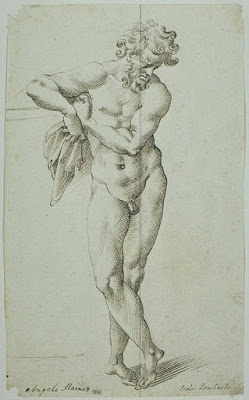 |
| attributed to Giovanni Angelo del Maino Figure Study ca. 1520 drawing Musée du Louvre |
 |
| attributed to Giovanni Angelo del Maino Figure Study ca. 1520 drawing Musée du Louvre |
 |
| attributed to Giovanni Angelo del Maino Paris with Golden Apple ca. 1520 drawing Musée du Louvre |
 |
| attributed to Giovanni Angelo del Maino Figure Study ca. 1520 drawing Musée du Louvre |
 |
| attributed to Giovanni Angelo del Maino Figure Study ca. 1520 drawing Musée du Louvre |
 |
| attributed to Giovanni Angelo del Maino Hercules carrying Pillars ca. 1520 drawing Musée du Louvre |
 |
| attributed to Giovanni Angelo del Maino Classical Warrior ca. 1520 drawing Musée du Louvre |
 |
| attributed to Giovanni Angelo del Maino Figure Study ca. 1520 drawing Musée du Louvre |
 |
| attributed to Giovanni Angelo del Maino Figure Study ca. 1520 drawing Musée du Louvre |
 |
| attributed to Giovanni Angelo del Maino Figure Study ca. 1520 drawing Musée du Louvre |
 |
| attributed to Giovanni Angelo del Maino Figure Study ca. 1520 drawing Musée du Louvre |
 |
| attributed to Giovanni Angelo del Maino Perseus ca. 1520 drawing Musée du Louvre |
 |
| attributed to Giovanni Angelo del Maino Figure Study ca. 1520 drawing Musée du Louvre |
 |
| attributed to Giovanni Angelo del Maino Minerva ca. 1520 drawing Musée du Louvre |
 |
| attributed to Giovanni Angelo del Maino Study of Mounted Warrior ca. 1520 drawing Musée du Louvre |
Giovanni Angelo del Maino (ca. 1475-ca. 1535) – Son of the Milanese woodcarver Giacomo del Maino, Giovanni Angelo del Maino, together with his brother Tiburzio, operated a successful workshop for polychromed wooden sculptures and altars during the first third of the sixteenth century. Based initially in their native Milan, the pair ultimately settled in nearby Pavia, continuing to supply choir stalls, altar structures, crucifixes and other wooden fittings, primarily to churches throughout Lombardy.